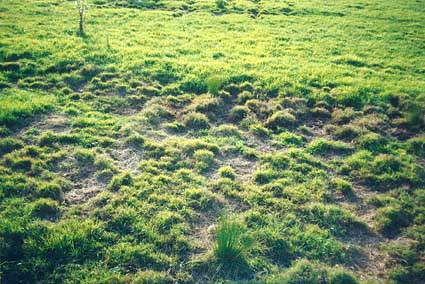This soil is from a low-lying area that is often waterlogged. It is a soil that is influenced by seasonal or permanently wet conditions for as least 2-3 months in most years and is classified as a Hydrosol soil.

Hydrosols commonly form in alluvial soil landscapes and so could be expected to be quite fertile. However poor drainage on the site in addition to poor internal drainage through the soil profile limits the potential for crops and pastures.
Under such saturated conditions organic matter doesn't break down easily and this profile has a high organic matter content right through the profile. Note the mention of iron and manganese (Fe/Mn) concretions in the profile description. These concretions and mottling indicate fluctuations of the water table and prolonged seasonal waterlogging.
These soils should only be used for grazing when they are dry (to avoid compaction) and should not be cultivated. Perennial grasses should be encouraged by addition of fertilizer and grazing management.
Profile description
- 0cm: A horizon. Dark grey-brown silty light clay. Plant roots common, drainage only fair, note crumbly structure with pore spaces, pH 4.9
- 29cm: B horizon. Grey-brown medium clay. Plant roots common, pH 6.7
- 44cm: B2 horizon. Dark yellowish grey heavy clay which is poorly drained. Plant roots common to 70cm, weak rusty mottles, Fe/Mn concretions, especially at 65 to 75cm, slight dispersion of clay, pH 6.7
Tocal newsletter
Want to find out about news, events, courses and publications?

